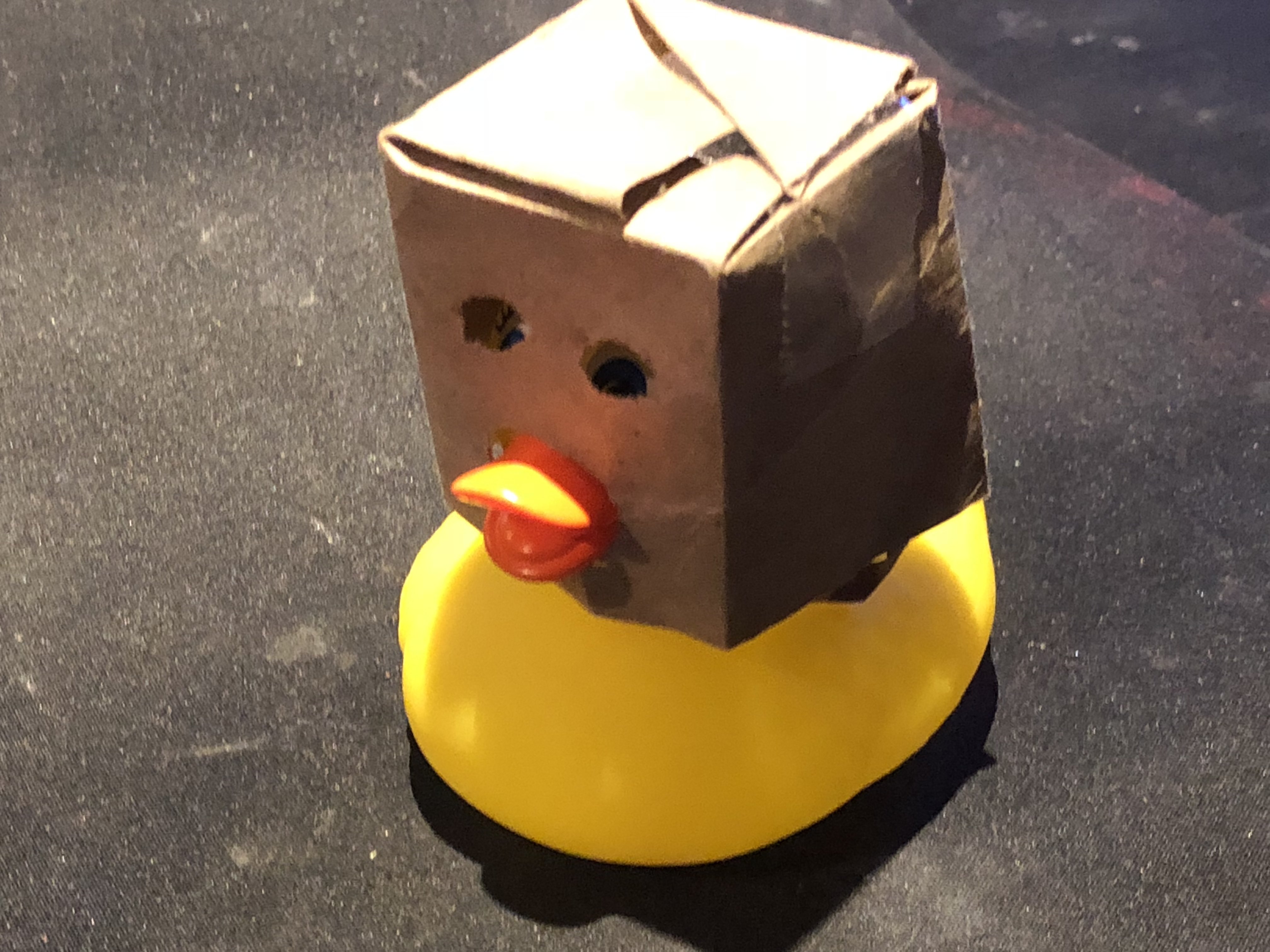If I recall correctly the maximum Noise Reduction Rating (NRR) for earplugs and earmuffs is around 30db. You can combine the two for a slight increase in hearing protection but you still hit a limit because of bone vibration.
Is there PPE out there to go even further beyond this? Where would it be commonly used?
I was actually wondering about this recently and I started thinking about how loud of sounds people working on the deck of an aircraft carrier would be exposed to. I found this interesting article about improving the hearing protection for them, because it turns out even for people who actually use both forms like they are supposed to (most of the people in the jobs exposed to the loudest sounds do, it would likely still be at the pain level for them if they only wore one so they have good motivation) it still isn’t enough for a full workday of exposure.
Here’s the link: https://apps.dtic.mil/sti/pdfs/ADA455113.pdf. The exposure is something like 145-155 dB. They say a final checker will get to the safe limit in only a few takeoffs, and that assumes that they can recover in a below 84 dB environment when they aren’t working, which apparently also doesn’t happen. It seems like it isn’t really a solved problem of how to protect people being exposed to this kind of sound level.
Couple years ago, I visited a historic grand prix that featured classic F1 cars. They also had open pits, so you could walk up and ask questions and literally stand next to the cars.
I was standing next to a 70’s F1 car when they performed an engine test. I was wearing thick, professional earplugs and the biggest Peltors you’ve ever seen. When they fired that thing up, I lasted all of five seconds before I walked out. At that point, it was no longer sound but sheer pressure. You could feel it in your chest.
As for how the mechanics do it? Easy, they’re all deaf as a post. Even the best earpro can’t prevent that kind of hearing damage, especially if that’s your chosen career. If you’re worried about good earpro not being enough, best advice is to put distance between you and the object/career path involved.
When I was in the Army they put us in a room with a jet engine bolted to a concrete block, and the exhaust routed outside of the building. They fired that thing up and it was overwhelming. My hearing is fucked up today, and I sometimes wonder how much of the damage was due to that demonstration. Standing near a fucking Howitzer without ear plugs when it was fired off probably didn’t help much either.
At that point, it was no longer sound but sheer pressure. You could feel it in your chest.
I wonder if there would be a way to counter that though. Maybe some kind of sound-focused bomb suit developed for a single profession?
I imagine most situations are avoidable with modern technology allowing us to do things remotely but perhaps there was something used historically or as part of a “because I can” experiment.
Space-suits must operate this way, if inadvertently…
The number of decibels at the rocket-nozzles is waaay higher than what it would be “at the top of the candle”, but … there’s pretty-much nothing in Nature as loud as those things are, except meteorites, maybe some volcanoes, being inside of lightning, etc…
I visited a top fuel dragster event once. It was insane to feel the pressure in my chest despite being a good 50-100m away from the cars.
There was that Nathan For You episode where they locked that kid in a coffin and had an orgy outside to test the sound proofing. No real practical use but apparently it did a good job.
All jokes aside, I’m very interested to hear if something exists to that degree of practical hearing protection. Maybe a "suit"of sorts to cancel noise and dampen bone conduction or super active noise cancelling?
…they locked that kid in a coffin and had an orgy outside…
You just named a practical use.
All jokes aside, I’m very interested to hear
I see you…
You’d need the suit to allow you to “float” inside or it. Air gapped, and rubber suspension? Maybe some kind of a liquid, but it would probably just allow for more transference?
I did some research about this for myself, the best I could find is an advertised -45dB (Remote Audio HN-7506), which makes me very skeptical, I couldn’t find any third party measurements but multiple reviews I read mention that they have about the same isolation as Etymotic earphones.
Active noise canceling is good but only for lower frequencies, it does almost nothing to mid and high frequencies, which is not necessarily a bad thing since mid and higher frequencies are easier to attenuate passively.
The best noise canceling headphones have an average noise cancellation of -27dB (-20dB in the bass frequencies), but the best noise cancellation that I could find (other than the HN-7506 that I don’t really trust) is from Etymotic earphones, they are completely passive and have an average attenuation of -32dB with -21dB reduction in the bass frequencies which is really impressive, they work so well because they are inserted much deeper in the ear which can be a bit uncomfortable. I read a lot of experiences from musicians and apparently if you use foam tips instead of the stock ones you can get even better isolation and slightly better comfort.
Another option is custom molded IEMs or earplugs, I couldn’t find measurements for those but based on comments from people that have them they seem to have slightly less isolation that Etymotic earphones but they’re are obviously infinitely more comfortable since they’re custom molded to your ears (there are also soft wraps that increase isolation but I don’t know how effective they are).
So if you want the best noise cancellation I recommend the Etymotic ER4XR or the Etymotic ER2XR (afaik most Etymotic earphones have the same body (so same isolation), choose them based on the sound signature you prefer), if you want good balance between noise cancellation and comfort get custom molded earplugs or IEMs.
My sources:
Headphones with best ANC measurements, Etymotic measurements (click on Isolation on the sidebar)
Removed by mod
I don’t know the exact frequencies but it’s something I read and noticed myself, and wikipedia seems to agree.
Active noise cancelling is best suited for low frequencies. For higher frequencies, the spacing requirements for free space and zone of silence techniques become prohibitive.
(Don’t know what that means.)
Personally I used the Sony XM3 a lot, on planes etc. which have great ANC, and I also used the Moondrop Blessing 3 which are just normal IEMs with no ANC and I only notice a difference in the low frequencies, you can also see that in the rtings measurements (XM3, Blessing 3), isolation in mids and treble is about the same, they seem to consider anything under around 250Hz as bass.
Removed by mod
deleted by creator
ANC isn’t protective in any way. If anything it’s probably just as damaging.
That’s just not true.
Your ear largely hears things through changes in air pressure. Projecting the same frequency and amplitude at the opposite phase prevents the change in air pressure in the first place. It’s literally cancelling the sound.
deleted by creator
You’re so wrong about this. ANC pretty much eliminates pressure inside the ear canal. That’s how ANC works. No pressure waves, no sound, no damage.
You’re not adding more pressure anywhere; you’re cancelling that pressure out.
Removed by mod
Except that’s exactly how nose canceling ear phones work.
Mine work like this: “Got your nose. Neener neener neener.”
deleted by creator
Bro. It’s not “just more pressure.” It’s literally less pressure.
If there are water waves moving a boat up and down, and you actively apply some movement (ha! pressure!) to the water so you generate waves that cancel the existing ones so that the boat stands still, would you say “but you don’t understand, the boat is getting MORE PRESSURE!!! It’s being damaged!!!”? Of course not. It’s pretty much the same principle.
Get a highschool physics book, read the chapter about sound, and come back. Otherwise, just stop.
I know nothing about this subject, but my instinct would tell me that anc would actually be protective. If you phase out sound, it
seizesceases to exist, right? That is the whole point of it?Again, pure instincts, don’t know shit myself.
Removed by mod
Thanks for the heads up. Non-native, always willing to learn.
This is partially correct, partially wrong.
As many have commented, flipping a signal by 180° cancels it out. However, this is only true for static noise though. Transient noise cannot be canceled out completely, because you would need to see into the future to know which signals to play to cancel out the noise.
The ANC headphones I own mainly cancel noise through passive shielding of the ears. The “active” noise canceling feature is not contributing a lot.
The cone of silence obvi
I think we need to define “hearing protection”, and how far your willing to go
For example this is probably less than practical.
It should be noted that active noise canceling doesn’t actually protect your ears. It’s just pumping more noise into them (noise that happened to be exactly opposite in phase, but the pressure is still there.)
Wouldn’t out of phase noise also cancel the pressure? The amplitudes combine to zero.
Yes.
Nope.
So what you hear as frequency is the variation of pressure- hi-low-hi-low-hi-low, right?
We tend to visualize it as a line going up and down, etc, but that’s just a conceptual aid.
To “cancel” noise, it plays a tone whose high and low pressure is out of phase but otherwise identical. So instead of hi-low-hi-low, it plays low-hi-low-hi noise, and you don’t “hear” it.
Great for tuning out the noise of a jet engine, and the loser who keeps trying to talk to you while you’re stuck in a tin can with a bunch of other sardines for 10+hours.
But that pressure is still there pushing against your eardrum, and no matter how good the pick up and driver is for the ANC, it’s never going to perfectly match noise anyhow.
There’s a reason most ANC ear cans are closed back- the passive noise isolation reduces the amount of work they have to do.
I believe, you’ve got some big misunderstanding in that. The wave is the variation in pressure. It doesn’t exert pressure beyond that. There is general air pressure, but that is always there, whether you’ve got a wave going or not.
Maybe it helps you understand it logically to think of how a speaker membrane moves. It does this motion:
| ) | ( | ) ...So, when it bulges to the right, it pushes air molecules closer together, which locally increases pressure on the right and continues to travel to the right, because the molecules push each other.
Then the membrane bulges to the left, which locally reduces pressure on the right and continues to travel to the right, because the molecules make room for each other, so the general air pressure causes air molecules to fill that room back in.
Both of those travel at the same speed, so they reach your eardrum, which is just another membrane and therefore does the same motion that the speaker membrane did.
So, a speaker is like a Newton’s Cradle, it doesn’t actually cause the molecules on the way to traverse across the room, like a fan would.
This may only be within the range of human hearing, and you can and do still suffer damage from excessive amplitude by frequencies above and below what is human detectable. ANC is not a protective technology for this reason, it is a quality of life technology.
But that pressure is still there pushing against your eardrum
So what you’re telling me is, i should really be wearing hearing protection when i go underwater? All that pressure must be wreaking havoc on my hearing.
Active noise cancelling does reduce the actual sound pressure (that’s the only way volume can be reduced). See for example: https://en.wikipedia.org/wiki/Hearing_protection_device#Electronic_hearing_protection_devices.
You understand that all of those devices have passive noise isolation, right?
What the electronics are doing is actually playing back noises that don’t cross certain thresholds. (Like people talking.) so you can “hear” them, but really it’s the speaker drivers you hear. The best will also filter out background noise, but the protection comes from the passive protection.
(Which is again different from acoustic filters, which basically create a chamber that alters the noise wave forms to passively attenuate things that are too loud.)
Hmm, I was under the understanding that it actually cancels out the pressure by creating a wave exactly 90 degrees off from the initial wave, creating reverse pressure and canceling the sound….
Not sure?
deleted by creator
Oops yep. You’re right
deleted by creator
It pumps noise at other noise. All that noise literally cancels out. There’s literally no sound.
active noise canceling doesn’t actually protect your ears
I doubt that, mate.
The thing is that it needs to be literally perfect polarization flipping to protect you. ANC as we know isn’t perfect; it doesn’t perfectly cancel sound and create absolute silence. You’re still potentially vulnerable to high SPL
Show me electronic ear pro that doesn’t have passive noise reduction.
I’ll wait.
The vast majority are adding ambient low-level noise back in rather than removing loud noises with active noise cancellation.
The electronics are similar if not identical, mind, but there’s a reason active noise cancellation in things like the Bose headphones don’t get an NRR or SNR test done. Because they’re not ear pro
It’s because active noise cancelling is bad at cancelling sudden sounds, so many types of noise people want to protect against (gunshots, metal clanging at a construction site) would be poorly attenuated by current active noise cancellation technology. This is a not really a physics issue, just an active noise cancellation technology issue. Fundamentally active noise cancellation can and does reduce sound pressure, because the speaker basically “pushes against” the incoming pressure waves to flatten them out.
Your example made me wonder how effective coating yourself in sound padding tiles to the point you resemble a lychee fruit would be.
I don’t exactly know whether this strat is redundant or not but I wear noise cancelling earbuds with full earmuffs overtop and it seems to do a good job. Plus i get the added benefit of being able to listen to music and hear phonecalls while on a machine.
deleted by creator
deleted by creator
Offline open source AI pointed me to this article on Wikipedia:
Electronic hearing protection devices
Some HPDs reduce the sound reaching the eardrum through a combination of electronic and structural components. Electronic HPDs are available in both earmuff and custom earplug styles. Electronic microphones, circuitry, and receivers perform active noise reduction, also known as noise-cancelling, in which a signal that is 180-degrees out-of-phase of the noise is presented, which in theory cancels the noise.[1]
Do you know what the rated NRR is? The Wikipedia article doesn’t say so this doesn’t really answer the question.
It points you in a new direction of research and information like any others here. Sorry I cared to ask and respond I certainly won’t next time.
Thing is, you didn’t care to respond. You let an AI respond for you cause you wanted to comment despite having nothing to say on the subject.
I did not. Read it. It is a quote from the article after I verified the reference. It is a toxic bias of group think fools that take no time to read past what they want to see.
It seems like your response was either trying to waste my time by sending me down a rabbit hole to find the information you didn’t provide, or just being lazy and not caring to so much as check what you were posting. In either case i could do without responses like that cluttering my limited time.
I a person. I spoke in good faith. I quoted a wiki reference.
Sorry, you’re right, i was being too harsh. when i responded i thought you weren’t speaking in good faith, but i must’ve misinterpreted.










